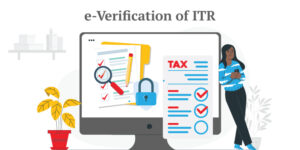 Before their income tax forms are deemed valid, individuals must electronically validate them according to a deadline set by the Income Tax Department.
Before their income tax forms are deemed valid, individuals must electronically validate them according to a deadline set by the Income Tax Department.
Filing the Income Tax Return (ITR) marks only the initial phase. The ITR must be verified within a designated timeframe (typically 30 days) to be deemed valid. Verification can be done through methods such as Aadhaar OTP, net banking, or by submitting a physical ITR-V form.
Following verification, the Income Tax Department reviews the return. You may receive an intimation notice under Section 143(1) via email, confirming the processing status and detailing any tax liabilities or refund amounts.
The Indian government recognizes the significance of a streamlined verification process and provides multiple options to accommodate the preferences of individual taxpayers. While the government offers various methods for ITR verification, a significant number of taxpayers opt for verifying their ITRs online soon after filing.
The primary reason is that online verification serves as the final step in completing the ITR filing process. Without verification, your ITR is deemed invalid and will not be processed by the Income Tax Department. This may result in delays, penalties, or even notices from the department.
Verifying your ITR online is the most convenient and favored method over mailing a physical copy. The benefits of online verification include:
Quicker: Online verification occurs instantly, eliminating the wait for delivery and processing of a physical form. Unlike sending a physical ITR-V form, online verification occurs instantaneously. This eliminates delays associated with postal mail and ensures prompt processing of your return.
Simpler: No requirement to print, sign, and mail the ITR-V form. Choosing online verification minimizes paper usage and promotes an environmentally friendly filing process. Once you verify your ITR online, you can be confident that your return has been successfully submitted and is in the process of being assessed.
There are multiple methods available to choose from based on your preference. The common online verification methods include:
Aadhaar OTP: This method is straightforward. You’ll require your PAN, Acknowledgement number (received post-filing), and a registered Aadhaar linked to a mobile number. The e-filing portal will send an OTP for verification.
Electronic Verification Code (EVC): You can generate an EVC via the pre-validated bank account method wherein if your bank account is already validated on the income tax portal, you can generate an EVC through your bank’s online portal or a pre-validated demat account, wherein just like bank accounts, a pre-validated demat account can also be used to generate an EVC. Some banks offer the option to generate EVCs through ATMs, although this is less common.
In summary, online verification provides a swift, secure, and efficient method to finalize your ITR filing. It guarantees the validity of your return, mitigates possible delays, and offers peace of mind during the processing phase.
The Central Board of Direct Taxes (CBDT) revised the time limit for ITR verification to 30 days from the previous 120-day period, beginning from the date of return submission. This emphasizes the importance of online verification to ensure compliance with the shortened deadline. Not verifying your ITR within 30 days may invalidate your return, potentially causing processing delays, late filing penalties, or even tax liabilities if tax is owed.
Taxpayers should prioritize online verification immediately after submitting their ITR. Avoid waiting until the last minute to minimize the risk of missing the deadline. Above all, choose the online verification method that suits you best, whether it’s Aadhaar OTP, EVC, or net banking. Having your details prepared will streamline the process.
Source: https://www.livemint.com/money/personal-finance/itr-filing-2024-why-should-you-verify-your-income-tax-return-after-filing-it-here-are-key-reasons-itr-v-form-11720900581699.html
© 2018 CA Chandan Agarwal. All rights reserved.